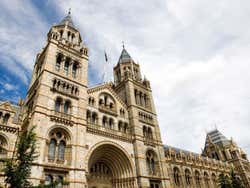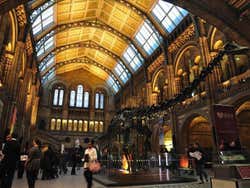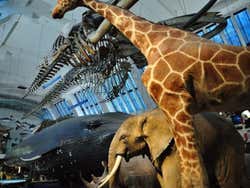
The Natural History Museum
The Natural History Museum in London is a museum about the natural world, its history and specimens. It has a large collection of over 70,000 species and objects related to the natural world.
The museum, once known as the British Museum (Natural History) was built between 1873 and 1880 to display an important collection of skeletons, fossils and plants that had previously formed part of the British Museum. The museum’s collection grew steadily and in 1986 it absorbed the adjacent Geological Museum.
Exhibitions
The entrance to the museum is breath-taking. In its carefully decorated hall, enormous creatures are displayed such as a diplodocus and a mastodon, originally from Chile.
The museum is composed of various collections displayed in this impressive building from the nineteenth century. We recommend visiting the following exhibitions:
- Dinosaurs: Several halls of this museum are dedicated to the Mesozoic era. Here, visitors will be able to observe dinosaur fossils and skeletons, including some life-size models of dinosaurs. This collection is usually the children's favourite.
- Mammals: In the Large Mammals Hall there are dissected mammals, as the name suggests, fossils, and an impressive life-size model of a blue whale.
- The Power Within: An interactive experience aiming to show the reasons why volcanos and earthquakes occur.
Perfect for children
If you’re travelling with children, the Natural History Museum is highly recommended, as it is extremely entertaining with plenty of things to see and do. Another positive aspect is that it is very close to the Science Museum, another favourite amongst children.



Schedule
Every day: 10 am – 5:50 pm.
24, 25, 26 December: closed
Price
Free entry.
Transport
Tube: South Kensington, District, Circle and Piccadilly lines.
Buses: 14, 49, 70, 74, 345, 360, 414, 430 and C1.
Nearby places
Science Museum (218 m) Victoria and Albert Museum (304 m) Harrods (976 m) Kensington Gardens (1.2 km) Hyde Park (1.3 km)

